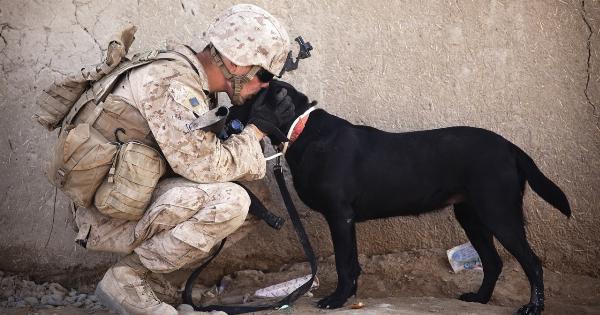As a dog owner, you’ve probably noticed your furry friend’s remarkable sense of smell.
But did you know that your dog’s nose can also provide valuable insights into his overall well-being? Yes, you heard it right! Just like a human’s eyes or skin, a dog’s nose can display various signs that indicate potential health issues or emotional state. In this article, we will explore what your dog’s nose can tell you about his well-being.
1. Cold and Wet
A healthy dog’s nose is typically cold and wet. The moisture on their nose helps enhance their sense of smell by capturing scent particles from the environment. It also aids in regulating body temperature.
So, if your pup has a wet and cold nose, it is generally a good sign of good health.
2. Warm and Dry
On the other hand, a warm and dry nose doesn’t necessarily indicate an unhealthy dog. Factors like weather conditions, indoor temperature, and activities your dog has been engaged in can contribute to a temporarily warm and dry nose.
However, if your dog’s nose remains consistently warm and dry for an extended period, it may be worth investigating further as it could be a sign of dehydration or an underlying health issue.
3. Cracked or Dry Patches
If you notice cracked or dry patches on your dog’s nose, it could potentially be a cause for concern. Dryness can be a sign of allergies, immune system disorders, or exposure to harsh weather conditions.
In some cases, dryness can progress to cracking, which can be painful for your furry companion. It is essential to keep your dog’s nose moisturized with pet-safe products and consult a veterinarian if the dryness persists.
4. Discharge
Unusual nasal discharge can indicate a variety of health issues. Clear and watery discharge could be a sign of allergies or a mild respiratory infection.
Thick, yellow or green discharge, however, may indicate a more serious respiratory infection or sinus problem. If you notice any changes in your dog’s nasal discharge color, texture, or smell, it is advisable to seek veterinary advice.
5. Swollen Nose
A swollen nose in dogs can occur due to a variety of reasons, including insect bites, allergic reactions, or trauma. It can also be a symptom of a more severe condition such as an infection or tumor.
If your dog’s nose appears swollen, monitor for any signs of pain or discomfort and consult a veterinarian if necessary.
6. Redness or Sores
Redness or sores on your dog’s nose may indicate a dermatological issue, such as an allergic reaction to food or environmental factors. It can also be a sign of sunburn, especially in dogs with lighter-colored noses and sparse fur.
Applying pet-safe sunblock and providing shade during peak sun hours can help prevent this problem.
7. Crusty or Bleeding
If you notice crusty areas or bleeding on your dog’s nose, it may suggest an underlying problem. Crusting can occur from skin conditions, while bleeding may be a result of trauma, infection, or even tumors.
It is crucial to seek veterinary attention to determine the cause and appropriate treatment for your dog’s specific case.
8. Excessive Licking or Digging
Sometimes, dogs may excessively lick or dig at their noses. While occasional licking is typically harmless, persistent licking or digging can indicate an underlying issue, such as allergies, skin irritation, or anxiety.
If you observe this behavior regularly, consulting with a veterinarian can help identify the trigger and provide suitable solutions.
9. Unusual Sensitivity
Your dog’s nose may also give you insights into their overall well-being through its sensitivity. If your dog becomes extremely sensitive to touch or withdraws when you approach their nose area, it may indicate discomfort or pain.
Dental issues, a foreign object lodged in the nose, or a nasal infection can be potential causes. Seeking professional advice is crucial to address and treat the problem effectively.
10. Changes in Pigmentation
Lastly, changes in your dog’s nose pigmentation can be a cause for curiosity. Some dogs, particularly those with lighter-colored noses, may experience changes in pigmentation, such as fading or darkening.
While this is often a benign phenomenon, certain autoimmune disorders or sun exposure can cause depigmentation or hyperpigmentation. Monitoring these changes and mentioning them during regular vet visits can help ensure your dog’s overall health and well-being.
Conclusion
Your dog’s nose is not only an incredible scent detector but also a valuable indicator of their well-being.
By paying attention to its temperature, moisture, color, and any unusual signs, you can uncover potential health issues and take the necessary steps to ensure your furry friend’s optimal health. Remember, while the nose can provide important signals, it is essential to consult a veterinarian for a comprehensive assessment and appropriate treatment.






























